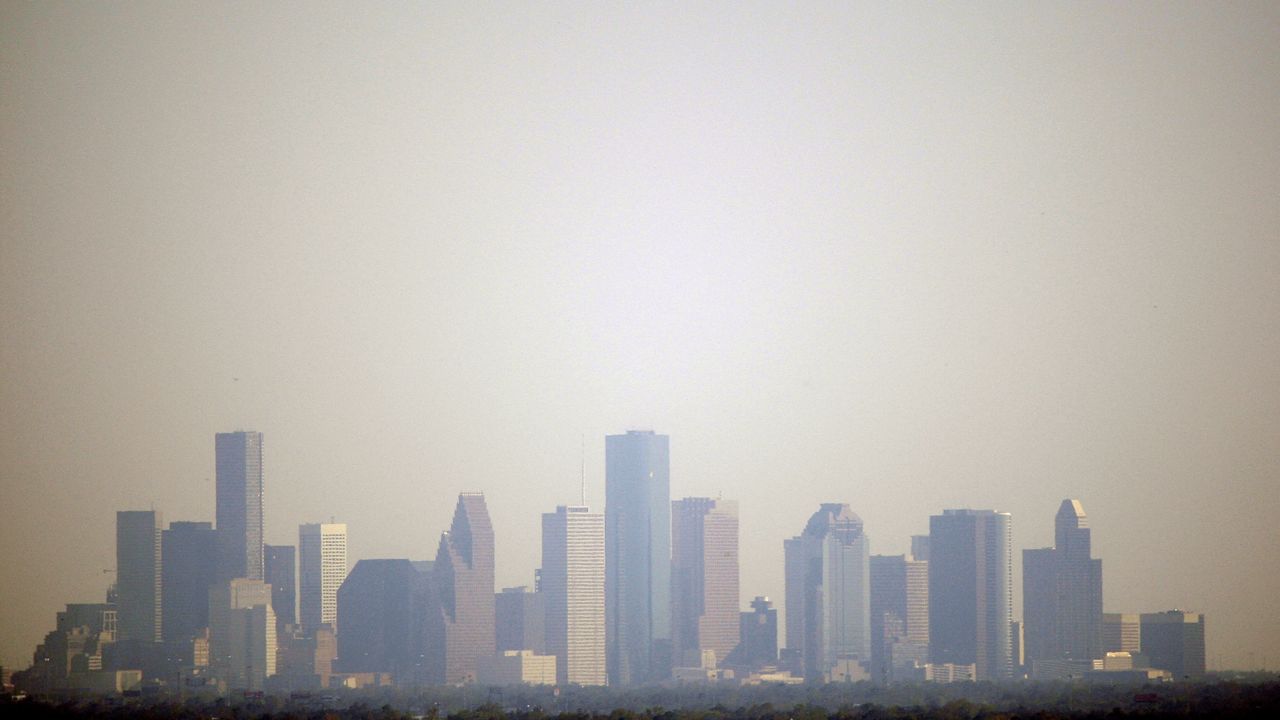Almost half of the U.S. population lives with “unhealthy” levels of harmful air pollution, and two Texas cities ranked among the 10 worst for ozone pollution in the nation, a new report from the American Lung Association reveals.
The Lung Association’s 26th annual “State of the Air” report, released last week, rates the quality of the air throughout the country from 2021 to 2023 based on three measures of air pollution: ozone pollution, short-term particle pollution and annual particle pollution.
Forty-six percent of the U.S. population — 156 million people — lives in an area that got a failing grade in all three measures. That’s nearly 25 million more people than last year’s report, and the most of any report in the last decade.
Extreme heat, wildfires and drought are among the causes of worsening air pollution, the Lung Association says. A deadly heat wave in Texas and smoke from wildfires in Canada in 2023 brought nationwide ozone and particle pollution levels “higher than they have been in many years,” the report found.
Several Texas cities ranked in the top 10 for ground-level ozone pollution, also known as smog, and year-round particle pollution, or soot.
According to the Lung Association, both ozone and particle pollution can have a number of negative impacts on people’s health, including causing asthma attacks, heart attacks, strokes, premature births and impaired cognitive functioning later in life. Particle pollution can also increase the risk of lung cancer.
Houston ranked No. 7 worst in the U.S. for high ozone days compared to 228 metropolitan areas and No. 8 for annual particle pollution out of 208 metropolitan areas. Dallas sits at No. 10 for ozone pollution.
The report also graded each U.S. county with available ozone data from A-F based on the number of high ozone days in the area. Eighteen Texas counties received an F rating, including Travis, Bexar, Dallas and Tarrant counties.
“Families across the U.S. are dealing with the health impacts of air pollution every day, and extreme heat and wildfires are making it worse. Air pollution is causing kids to have asthma attacks, making people who work outdoors sick, and leading to low birth weight in babies. This year’s report shows the dramatic impact that air pollution has on a growing number of people,” said Harold Wimmer, president and CEO of the American Lung Association.
Income and race also plays a role in air quality. According to the report, people of color and those with lower incomes are disproportionately affected by air pollution and are at higher risk for illness. Additionally, Hispanic people are three times as likely as white people to live in a community with failing grades in all three categories.
Wimmer said efforts to cut U.S. Environmental Protection Agency staff, funding and programs will leave people more vulnerable to harmful air pollution.
“Even as more people are breathing unhealthy air, the federal staff, programs and policies that are supposed to be cleaning up pollution are facing rollbacks, restructuring and funding challenges,” Wimmer said. “For decades, the U.S. Environmental Protection Agency (EPA) has worked to ensure people have clean air to breathe, from providing trustworthy air quality forecasts to making sure polluters who violate the law clean up…We need to protect EPA.”
In the first 100 days of the Trump administration, nearly 121,000 federal employees were laid off or targeted for layoffs as part of sweeping cuts to the federal workforce, according to CNN. At the EPA, over 1,000 workers have already been terminated, and employees received emails on Monday urging them to voluntarily leave the agency, USA Today reports.





